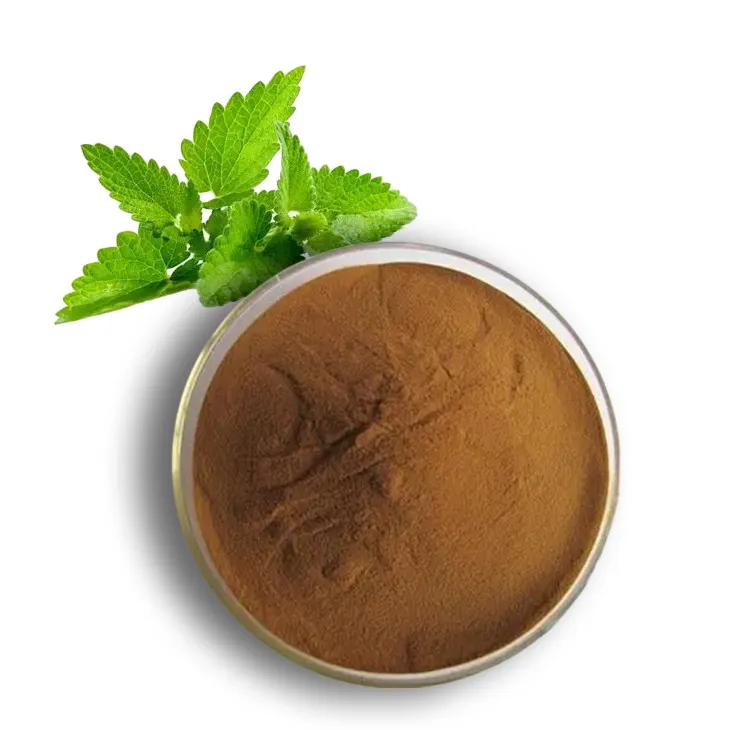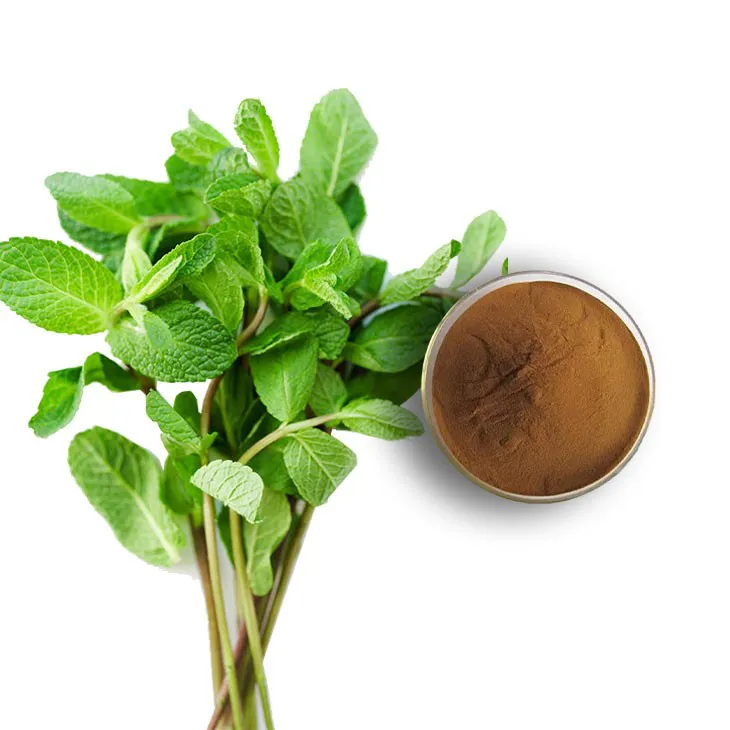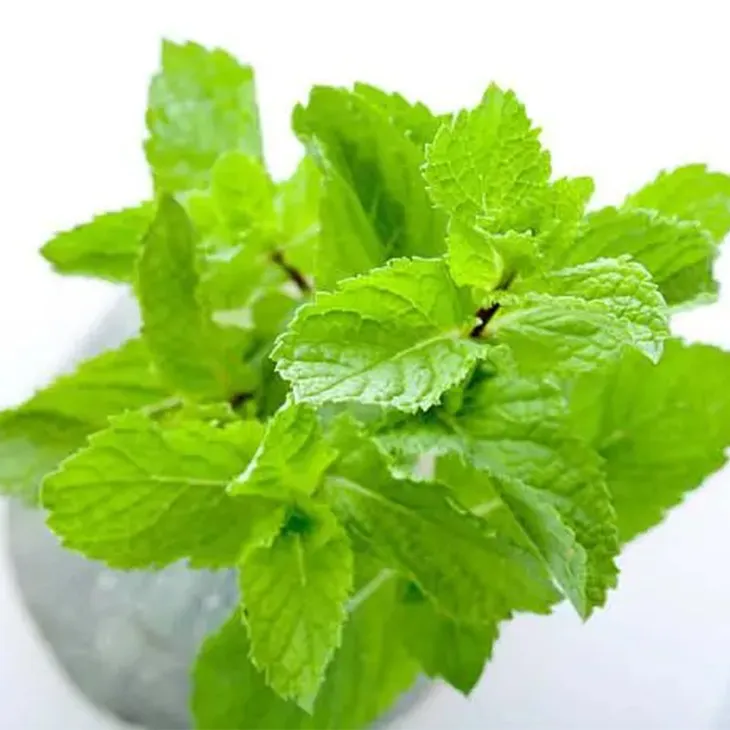- 0086-571-85302990
- sales@greenskybio.com
The best peppermint extract powder in 2024.
2024-11-26

1. Introduction
As the year 2024 unfolds, the search for the best Peppermint Extract Powder has become a topic of great interest. Peppermint Extract Powder is widely used in various fields, including food, beverage, cosmetics, and traditional medicine. With the increasing demand, it is essential to understand its different grades, potential side effects, and its significance in different cultures.

2. Grades of Peppermint Extract Powder
2.1 High - grade peppermint extract powder
High - grade peppermint extract powder is often characterized by its high purity. It typically contains a large proportion of the active ingredients from peppermint, such as menthol and menthone. This type of powder is usually obtained through advanced extraction techniques. It has a strong and pure peppermint flavor, which makes it ideal for applications where a concentrated peppermint taste is desired. For example, in high - end confectionery products or luxury cosmetic formulations, high - grade peppermint extract powder can add a distinct and refreshing flavor or aroma.
2.2 Medium - grade peppermint extract powder
Medium - grade peppermint extract powder is more commonly available in the market. It has a relatively balanced composition of peppermint components. While it may not have the extremely high purity of the high - grade variety, it still offers a good peppermint flavor. This grade is often used in a wide range of products, including regular food items like chewing gum and some over - the - counter medicinal products for mild digestive issues. It provides a cost - effective option for manufacturers who want to incorporate peppermint flavor without incurring the high cost associated with high - grade powder.
2.3 Low - grade peppermint extract powder
Low - grade peppermint extract powder may contain a lower percentage of the key peppermint components. It might also have more impurities or be a by - product of less refined extraction processes. However, it still has some applications. For instance, in some industrial cleaning products where the peppermint scent is used mainly for masking unpleasant odors rather than for its therapeutic or flavor - enhancing properties. It is important to note that the quality and purity of low - grade powder may vary significantly, and it may not be suitable for applications where a high - quality peppermint flavor or effect is required.
2.4 How to distinguish between grades
There are several ways to distinguish between different grades of peppermint extract powder. One of the most obvious is the price. High - grade powder usually commands a higher price due to its superior quality and purity. Another factor is the intensity of the peppermint smell. High - grade powder typically has a more intense and pure peppermint aroma. Chemical analysis can also be carried out to determine the exact composition of the powder, including the percentage of menthol and other active ingredients. Additionally, the source of the powder can provide some clues. Reputable suppliers are more likely to provide high - grade products.
3. Side effects and precautions
3.1 Potential side effects
While peppermint extract powder has many benefits, it can also have some potential side effects. In some cases, excessive consumption or use may lead to allergic reactions, especially in individuals who are allergic to plants in the Lamiaceae family, which includes peppermint. Symptoms of an allergic reaction can include skin rashes, itching, swelling, and in severe cases, difficulty breathing. Additionally, peppermint extract powder may cause gastrointestinal discomfort in some people. High doses may lead to heartburn, nausea, or vomiting. This is because peppermint can relax the lower esophageal sphincter, allowing stomach acid to flow back into the esophagus.
3.2 Precautions
When using peppermint extract powder, it is important to take certain precautions. First and foremost, it should be used in moderation. If you are pregnant or breastfeeding, it is advisable to consult a healthcare provider before using peppermint extract powder, as there is some uncertainty about its safety during these periods. People with gastroesophageal reflux disease (GERD) should also be cautious, as the relaxing effect on the lower esophageal sphincter may exacerbate their symptoms. Moreover, when using peppermint extract powder in cosmetic products, it is essential to perform a patch test to check for skin sensitivity.
4. Role in traditional medicine across different cultures
4.1 In Western traditional medicine
In Western traditional medicine, peppermint has a long - standing history of use. It has been used to treat various digestive problems, such as indigestion, flatulence, and nausea. Peppermint tea, which can be made from peppermint extract powder, is a popular home remedy for soothing an upset stomach. The menthol in peppermint extract powder has a cooling effect, which can also be beneficial for relieving headaches when applied topically. For example, some headache balms contain peppermint extract powder for its analgesic and cooling properties.
4.2 In Eastern traditional medicine
In traditional Chinese medicine, peppermint is considered to have properties that can clear heat and relieve exterior syndromes. It is often used in herbal formulas to treat symptoms such as fever, headache, and sore throat. In Ayurvedic medicine from India, peppermint is used for its digestive and carminative properties, similar to its use in Western medicine. It is also believed to have a balancing effect on the body's doshas, particularly the vata and kapha doshas.
4.3 In Middle Eastern traditional medicine
In Middle Eastern traditional medicine, peppermint has been used for centuries for its medicinal properties. It has been used to treat digestive disorders, as well as respiratory problems. Peppermint extract powder has been used in inhalants to relieve nasal congestion and coughs, taking advantage of its expectorant and decongestant properties.5. Evaluation of different products in 2024
5.1 Based on customer reviews
Customer reviews play a crucial role in determining the quality of peppermint extract powder products in 2024. Positive reviews often mention the strength and purity of the peppermint flavor, as well as its effectiveness in various applications such as cooking or for its therapeutic benefits. For example, a product that receives high praise might be described as having a "fresh and intense peppermint taste" that enhances the flavor of baked goods. On the other hand, negative reviews may point out issues such as an off - taste, which could indicate a lower - quality product or improper storage. Some customers may also complain about side effects they experienced, which could be a sign of either a sub - standard product or improper use.
5.2 Based on scientific research
Scientific research in 2024 has provided valuable insights into the quality and effectiveness of peppermint extract powder. Studies have focused on analyzing the composition of different products, including the percentage of active ingredients. Research has also investigated the bioavailability of these ingredients, which is important for understanding how effectively the body can absorb and utilize the peppermint extract powder. For example, a study might find that a particular product has a higher bioavailability of menthol, making it more effective for treating certain conditions. Additionally, scientific research has explored the safety aspects of peppermint extract powder, helping to establish guidelines for its proper use.6. Conclusion
In conclusion, as we explore the world of peppermint extract powder in 2024, it is clear that there are different grades with varying qualities, potential side effects that need to be considered, and a rich history in traditional medicine across different cultures. By evaluating products based on customer reviews and scientific research, consumers can make more informed decisions when selecting the best peppermint extract powder for their needs. Whether it is for culinary, cosmetic, or medicinal purposes, understanding the nuances of peppermint extract powder is essential for maximizing its benefits while ensuring safety.
FAQ:
What are the different grades of peppermint extract powder?
Peppermint extract powder can generally be classified into different grades based on factors such as purity, origin, and production methods. Higher - grade peppermint extract powder is often made from high - quality peppermint leaves, with a higher content of the active ingredients. It may also be processed with more refined techniques to ensure better flavor and quality. Lower - grade products might have a lower concentration of the active components or may be made from less - than - optimal raw materials. However, specific grading systems can vary among different manufacturers and regions.
How can one distinguish between different grades of peppermint extract powder?
One can distinguish between grades in several ways. Firstly, the price can be an indicator, as higher - grade products usually cost more due to better raw materials and processing. Secondly, the appearance and smell can provide clues. Higher - grade peppermint extract powder may have a more vibrant color and a stronger, purer peppermint aroma. Thirdly, checking the product label for information about the origin of the peppermint, the extraction method, and the percentage of active ingredients can also help in differentiating between grades. Additionally, customer reviews and brand reputation can give an idea of the quality and grade of the product.
What are the potential side effects of using peppermint extract powder?
Some potential side effects of using peppermint extract powder include heartburn, allergic reactions in some individuals, and in some cases, it may interact with certain medications. Peppermint can relax the lower esophageal sphincter, which may lead to acid reflux in some people. Allergic reactions may manifest as skin rashes, itching, or respiratory symptoms in sensitive individuals. If you are taking medications, especially those for gastroesophageal reflux disease (GERD) or for reducing stomach acid, it is important to consult a healthcare provider before using peppermint extract powder, as it may interfere with the effectiveness of these medications.
What precautions should be taken when using peppermint extract powder?
When using peppermint extract powder, it is important to follow the recommended dosage. Excessive consumption can increase the risk of side effects. Pregnant and breastfeeding women should be cautious, as there is limited research on the safety of peppermint extract powder during these periods. People with gastrointestinal disorders such as irritable bowel syndrome (IBS) should also consult a doctor before using it, as it may affect their condition differently. Additionally, if you have a known allergy to mint or related plants, avoid using peppermint extract powder altogether.
What is the role of peppermint extract powder in traditional medicine across different cultures?
In many Western cultures, peppermint has been used traditionally to soothe digestive problems such as indigestion, nausea, and bloating. It has also been used as a natural remedy for headaches. In some Asian cultures, peppermint is used in traditional medicine to relieve respiratory problems, as it is believed to have expectorant and anti - inflammatory properties. In Middle Eastern cultures, peppermint has been used for centuries to freshen breath and improve oral health. Overall, peppermint extract powder has played a diverse role in traditional medicine across different cultures, often being valued for its cooling, soothing, and medicinal properties.
Related literature
- The Benefits and Uses of Peppermint Extract in Modern Medicine"
- "Peppermint: A Traditional Herb with Modern Applications"
- "Evaluating the Quality of Peppermint Extract Powders in the Market"
- ▶ Hesperidin
- ▶ citrus bioflavonoids
- ▶ plant extract
- ▶ lycopene
- ▶ Diosmin
- ▶ Grape seed extract
- ▶ Sea buckthorn Juice Powder
- ▶ Beetroot powder
- ▶ Hops Extract
- ▶ Artichoke Extract
- ▶ Reishi mushroom extract
- ▶ Astaxanthin
- ▶ Green Tea Extract
- ▶ Curcumin Extract
- ▶ Horse Chestnut Extract
- ▶ Other Problems
- ▶ Boswellia Serrata Extract
- ▶ Resveratrol Extract
- ▶ Marigold Extract
- ▶ Grape Leaf Extract
- ▶ blog3
- ▶ blog4
-
The Best Cranberry Extract in 2024.
2024-11-26
-
The best natural source of diosmin.
2024-11-26
-
100% Pure Organic Hedyotis Diffusa Extract.
2024-11-26
-
How to make powder with baicalin?
2024-11-26
-
Nettle leaf extract
2024-11-26
-
Shikonin
2024-11-26
-
Honeysuckle Pollen
2024-11-26
-
Bitter Melon Extract
2024-11-26
-
Coix Seed Extract
2024-11-26
-
Acai Berry Extract
2024-11-26
-
Artichoke Leaf Extract
2024-11-26
-
Giant Knotweed Extract
2024-11-26
-
Stevia Extract
2024-11-26
-
Curcumin
2024-11-26





















